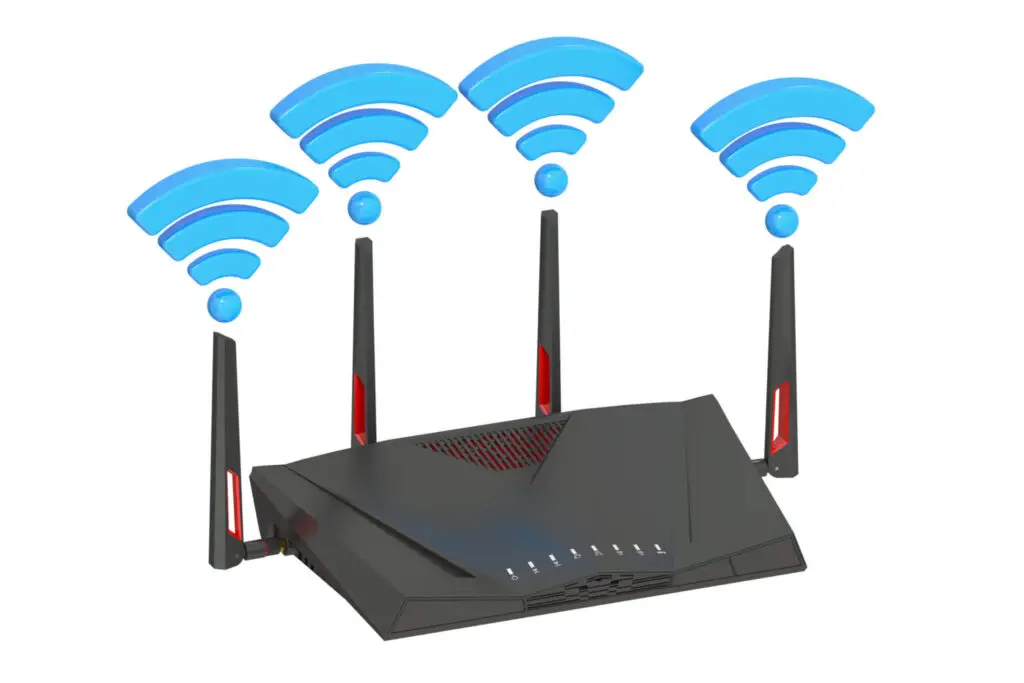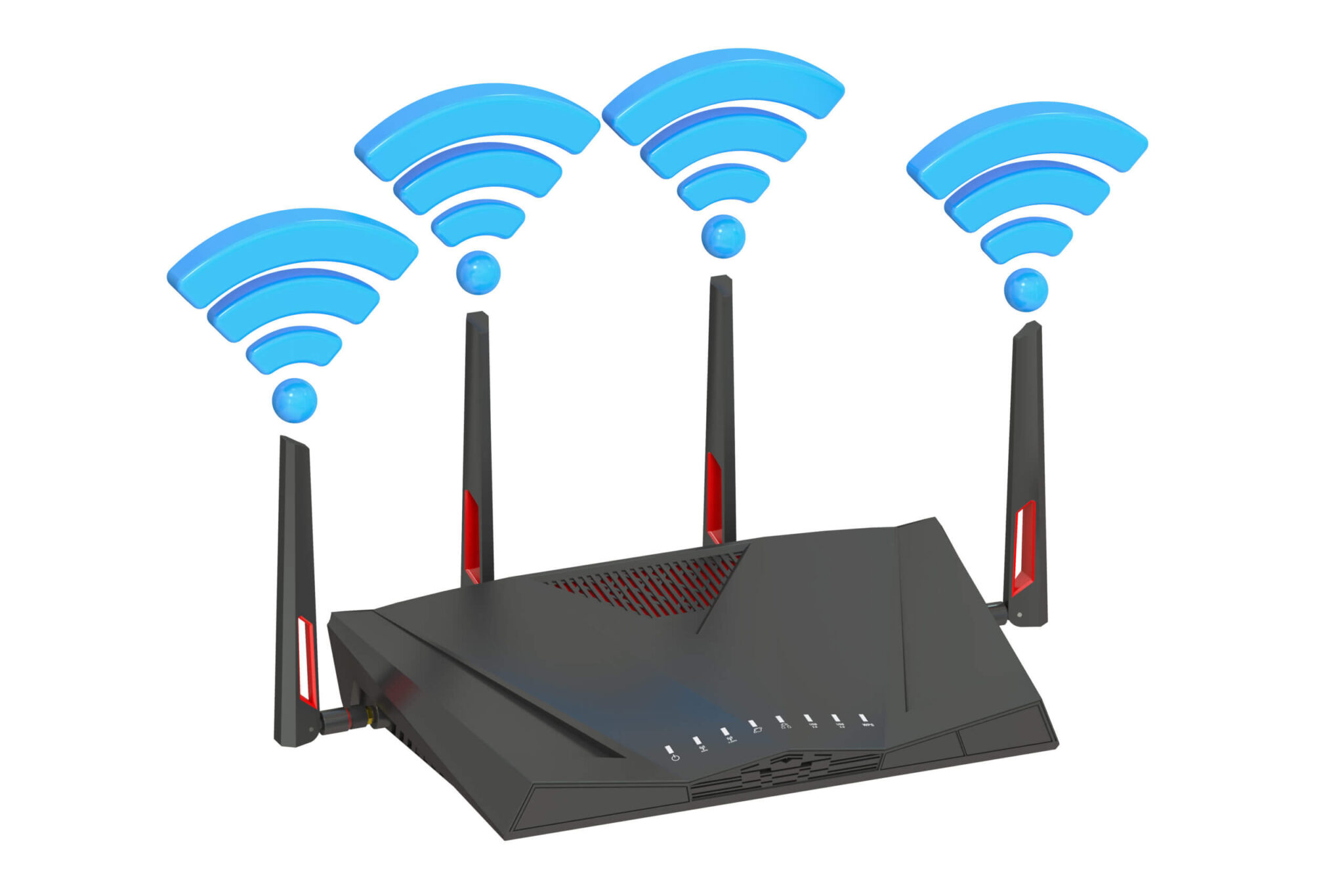Wireless communication was a game-changing innovation that revolutionized the way we communicate. Wireless communication refers to data transmission from one device to another that is not physically linked by an electrical wire. An antenna is a device that transforms electrical impulses to electromagnetic waves (EM waves) or vice versa. The electrical signal from the transmitting circuit gets converted to EM waves and emitted into the atmosphere in the case of a transmitting antenna. The EM waves in the atmosphere is caught by a receiving antenna and transformed back to electrical signals for further processing.
Types Of Wi-Fi Antennas�?
Wi-Fi antennas comprise two categories: omnidirectional and directional.
Omnidirectional antennas give the broadest signal coverage by radiating a signal at a 360-degree angle. Consider an omnidirectional antenna to be an incandescent lightbulb with no form. When the lightbulb gets turned on, it will disperse light evenly in all directions, illuminating the whole room.
The range of a directional antenna is often significantly shorter, but the coverage area is much more comprehensive. In other words, the light from the lightbulb will not go as far as it would with a directional antenna, but it will be enough to illuminate a whole room. Omni antennas are prominently featured indoors and outdoors.
Types Of Omnidirectional Wi-Fi antennas
1. Outdoor Omnidirectional Antennas: These antennas primarily boost Wi-Fi signals outside. They are usually linked to a router, access point, or outdoor to expand wireless coverage outside.
2. Ceiling Dome Antennas: Installed on the ceiling of a home, office building, or warehouse, these antennas connect to a Wi-Fi router or access point through a coaxial wire.
3. Dipole Antennas, sometimes known as Rubber Duck Antennas, are commonly seen on routers, access points, and Wi-Fi USB adapters.
As the name implies, directional antennas concentrate all their power in one direction. A directional antenna works in the same way as a flashlight does. When you switch on a flashlight, it lights the area focused on. The flashlight’s beamwidth (radiation pattern) is triangular; everything outside of that triangle receives no light.
They can send and receive a wireless signal from a greater distance but with a considerably narrower coverage area because the antenna’s strength is more concentrated. In other words, the light can travel beyond one room, but it will not illuminate the entire space.
�?Long-range point-to-point Wi-Fi networks is a case whereby multiple directional antennas interact with an omnidirectional antenna. Long-range refers to Wireless multipoint connections, in which numerous directional antennas connect with an omnidirectional antenna and are common uses for directional Wi-Fi antennas.
Types Of Directional Wi-Fi Antennas
The most common directional antenna is the Yagi. The majority of Yagi antennas have an arrow form. They must point in the direction they send or receive a signal to operate. The radiation pattern of a conventional Yagi antenna is 45 degrees.
Low-profile antennas designed to transfer radio signals to and from a specific region are mini panel antennas. Indoors, these antennas primarily boost Wi-Fi signals. They are used to replace a rubber duck antenna on a router, access point, or Wi-Fi USB adapter. The antenna is pointed in the direction you wish to send and receive signals to avoid signal reception and transmission problems. The radiation pattern of these antennas is 60 degrees.
Panel Antennas: powerful antennas that can broadcast or receive a signal over long distances. They may be linked to a router to send data over longer distances or to a USB Wi-Fi adapter to receive data further away. Panel antennas feature a 35-degree radiation pattern, which is more directed than tiny panel antennas.
Antennas With A Parabolic Grid: These antennas have a very high gain and directional. They usually have an extremely narrow beamwidth, ranging from 3 to 20 degrees. As a result, parabolic antennas can broadcast and receive signals over great distances, making them ideal for point-to-point Wi-Fi networks. They can also survive adverse weather conditions owing to their design.
Frequencies, Wavelengths, And Range Of Wi-Fi Antennas
As previously stated, Wi-Fi devices interact with one another using radio waves. Radio waves, like all waves, are measured in frequencies – the rate at which data is delivered and received within a given time, usually measured in Hertz (Hz) per second.
Wi-Fi antennas use a variety of frequencies to broadcast data, including 900 MHz, 2.4 GHz, 3.6 GHz, 4.9 GHz, 5 GHz, 5.9 GHz, and 6.0 GHz, depending on the Wi-Fi technology. The most popular Wi-Fi frequencies are 2.4GHz and 5GHz, which correspond to wavelengths of 12.5cm and 6cm, respectively.
Lower frequency waves have longer wavelengths, as you can see. Lower-frequency Wi-Fi antennas easily overcome barriers like floors and walls since the wavelength is extended, allowing them to broadcast data further. The sole disadvantage is that data gets conveyed more slowly.
Each Wi-Fi antenna is constructed specifically for the signal’s frequency and wavelength. In other words, a 2.4GHz Wi-Fi antenna cannot be used in replacing a 5GHz antenna, and vice versa. Furthermore, specific Wi-Fi antennas’ design uses both frequencies (known as dual-band antennas). They can run on one frequency at a time or simultaneously, depending on the antenna.

Polarization Of Wi-Fi Antennas
The polarization of a wireless signal refers to how it gets transmitted regarding the ground.
EM waves get polarized in three ways: linear, circular, or elliptical. Linear polarization is the most frequent polarization mechanism used in Wi-Fi transmission. There exist two types of linear polarization: vertical and horizontal.
Radio waves that go parallel to the ground are referred to as horizontal polarization.
Radio waves that travel perpendicular to the earth are vertical polarization. Almost all Wi-Fi antennas are vertically polarized. The polarization of the antennas must match for the optimal signal. You will experience a signal loss if the polarization of the radio wave does not thoroughly check that of the Wi-Fi antenna. Additionally, if the polarization of the Wi-Fi antenna and the radio waves are opposite, the signal will be lost.
How Do I Position And Place My Wi-Fi 4 Router Antenna?
It’s pointless to have the most fantastic Wi-Fi Router from the best manufacturer if you don’t properly optimize it. Without having your Wi-Fi router and its Antennas positioned correctly, you will see dismal outcomes such as sparse Wi-Fi signals and poor Wi-Fi range.�?
There should be no problems with internet access as long as all relevant settings, such as Wi-Fi antenna pointing, Wi-Fi router location, and so on, are set up correctly.
The position of the Wi-Fi 4 router antenna and its placement is critical for the transmission of Wi-Fi signals to be steady, speedy, and effective. Strong Wi-Fi signals result in a broader range of Wi-Fi connectivity. The proper placement and arrangement of the router’s four antennas fulfill more than half of the criteria.
The following are some important considerations for achieving consistent internet access after installing a Wi-Fi router at home:
1. Optimal data coverage requires proper posture.
2. Antennas on the router should be oriented correctly for consistent Wi-Fi functioning.
3. The best potential location for your router at home
Because an antenna radiates EM (electromagnetic) waves, it is critical to analyze the features listed above. The router’s location within the house significantly impacts how antennas perform. As a result, it could be wise to place the router’s four antennas so that each is pointed in the direction from where the signal is received.
You should put the middle two of your antennas at a 90-degree angle; this allows the device to get better signal quality with a typical antenna configuration. However, the materials used in your home’s construction have an unanticipated impact on your Router’s Antenna’s ability to receive optimal signal strength. Let us explain: concrete iron grids are more likely to block signals within the house.
You may also use a Wi-Fi Analyzer App on your phone to check the strength of your Wi-Fi connection. Moving and repositioning your router, as well as removing its four antennae, will save you a significant amount of time in achieving ideal Wi-Fi range coverage in your home.
On the other hand, your experimental setup could not appear promising from the standpoint of view. To keep things simple, follow these principles as closely as possible to ensure maximum Wi-Fi coverage:
1. The higher your router is, the better; at the first site and in the middle house, moving your Wi-Fi router higher than the floor or higher above the table would likely yield better results.
2. Avoid placing your router near shiny surfaces since they can obstruct Wi-Fi signals, and metal studs in the walls might create network interference.
3. Play around with the angles and orient your router in a doughnut pattern to ensure that every corner of your home receives maximum Wi-Fi coverage.
If you can’t position your router at the center of your house, you may build a reflector and place it behind your router and antennae. Reflectors made out of tinfoil and cardboard, bounce the signal back to the front of the router, counteracting its omnidirectional antenna and providing more signal strength where you need it. A correct curvature and form are required for a reflector to operate, although blueprints are accessible on the Internet.�?
Conclusion�?
To summarize, the position and placement of the Router’s Antennas have a significant impact on Wi-Fi performance. In the same way that having the router’s antenna positioned and placed in the proper orientation may increase your experience, setting them in an inappropriate form might impair your internet access experience.

